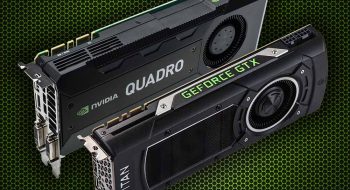This particular argument goes back decades — as we all know, CPUs are probably the most critical component in any computer configuration. The processor is the brain behind every function your computer executes, whether it be enabling fans to cool the PC at a safe, operational temperature, processing the data in a next generation game using the best graphics cards, or rendering a large video file for YouTube.
Here’s the question: who makes the best computer processor? Most would likely say Intel, due to its ability to always be first to market, and provide the fastest CPU speeds — but history is always important to consider, especially when breaking down the biggest and the baddest companies in tech industry.
A Corporate Bloodbath — CPU History Breakdown
In order to fully understand where both companies stand today, it is critical to understand how these companies began, grew, and how the marketplace competition fueled the development of an entire industry, and a business era.
In 1968, Intel was founded by Gordon Moore and Bob Noyce with a clear vision in mind: to create, and advance the computing and technology world, starting with the semiconductor. As the need for informational computing quite literally, multiplying numbers, came to surface, so did the competition. In this case, both companies were hitting the market at generally the same time. In 1969, AMD was then founded by Jerry Sanders along with a team poached from the same original company Moore and Noyce left, Fairchild Semiconductor. Little did they know, a vicious battle in the courtroom, on the technical development tables, and in the market place would ensue — one of the fiercest corporate battles in history.

Both companies released original mathematical “multiplier” chips to market and both companies profited decently well, but initially, Intel had the upper-hand as their “so-called” x86 chip architecture was selected by IBM in coordination with the Microsoft DOS launch. In order to avoid excessive dependence on one sole source of CPU chips, IBM required Intel to find another supplier of chip manufacturers.
Then, in 1982, AMD and Intel sign a technology contractual arrangement making AMD IBM’s chip second supplier. This monumental deal gave technological spec access to AMD for Intel’s “286” chip technology. Although this agreement was in place, Intel further developed its next series of CPU’s, the “386”. This was the original product development spark to ignite competitive CPU fire that is still burning hot to this day.
Later in 1982, Intel then denied AMD permissions to the “386” chip license when IBM PC’s market share grew from 55% to 84% via TechSpot Article | “The Rise and Fall of AMD”. This restriction hung AMD out to dry without specification access to Intel’s CPU architecture. This restriction took AMD over five fiscal years to “reverse-engineer” the 80368 into the Am368, but once constructed, it proved to be a greater match to Intel’s design. Where the Intel “386” chip achieved 33MHz, the AMD “Am386DX” was marked at 40MHz, closing in on “486” performance metric. As a common theme, especially in the current market place, we commonly hear AMD consistently providing consumers an optimally better price to performance ratio through GPU’s and CPU hardware technologies. This was probably the first notable instance on record where AMD had the upper hand in that space as Intel was typically the first to market with most chips, and AMD rebuttal with numerous
“In 1990, a Merrill Lynch analyst called AMD “dead,” largely because of the time needed to reverse-engineer the chips, just one of many times an analyst would say this about the company. Intel’s 386 was released in 1985, for instance, but AMD’s didn’t appear until 1991; Intel’s 486 was out in 1989, while AMD’s wasn’t on the market until 1993” – Cyrus Farivar and Andrew Cunningham, arstechnica.com
Then, in 1993, AMD’s Am386 success was followed up by the insanely competitive 40MHz Am486, which offered a calculated 20% better performance than Intel’s 33MHz i486 for identical price points. This chip architecture was replicated through the entire 486 series of chips, and while Intel’s 486DX maxed out at 100MHz, by competitive nature, AMD offered a blazing 120MHz upgrade. By the dollar amounts, and to better describe the chip space at that time AMD’s revenue skyrocketed from a few cents over $1 billion in 1990, to well beyond $2 billion in 1994.
Fast Forward — New Millennium, New Superpower CPU Brand
2000– AMD initiates discussions with the European Commission that Intel was violating Euro anti-competition statutes through “abusive” marketing campaigns. AMD used legal means to try to get access to information stemming from a previous Intel antitrust case. AMD was quite literally — starting to feel the heat from their sole competitor.
2003 – Intel was lagging behind with the adaptation to Window’s OS functionality. AMD broke through the landscape with the introduction of the 64-bit version of its x86 CPUs, topping Intel. For the first time really, AMD went first to market with a new development, and Intel had to chase to match the technology.
2005– AMD submits another antitrust suit aimed toward Intel in a U.S. District Court in Delaware. This particular complaint analyzes, in detail, Intel’s unlawful monopoly of the x86 microprocessor space by using aggressive marketing tactics, convincing consumers and tech conglomerates from dealing with AMD.
So what happened? Why did AMD fall behind in such a short amount of time?
Well, quite simply. Intel came out faster, stronger, and smarter from the beginning, primarily when the millennium hit during the .com boom — from a technological, marketing, and business viewpoint. It’s the household name that you recognize when you mention a high-end processor in any high performance PC in 2015. There is no single reference point for blasting AMD from its unstable market stance in early 2006, but there are a few historical turning points, and legal battles to keep in mind. AMD’s CPU market share declined due to the direct correlation to its own missed marketing opportunities, some bad market forecasting influencing its own prior successes in the computer processor landscape.
So here’s the 2 decisions you can make between the two best computer processor manufacturers —
- Spend more on newer components that feature better speed and performance for the highest-end chips with Intel…. or
- Save on an the equivalent technology – a lower priced solution in an AMD processor that will run the same with chips employing technologies from roughly a year prior.
From your personal perspective: what was the biggest factor that contributed to the computer processor market shifts? First to market technology developments or historically miscalculated business decisions?
Weigh in on the CPU super power debate below.









You missed the part where Intel was paying OEMs to not use AMD or other third party CPUs and threatening to remove their volume discounts. AMD was massively ahead with their Athlon CPUs back when Intel released their Pentium 4 CPUs. They didn’t get anywhere though because no big OEM could use their CPUs…
http://www.anandtech.com/show/3839/intel-settles-with-the-ftc/3